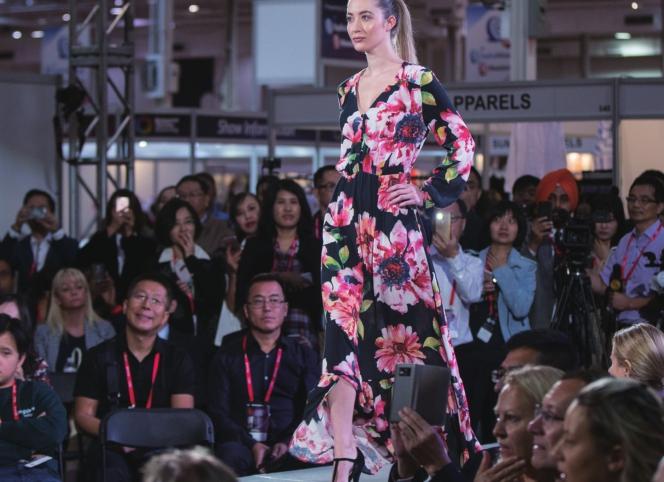Clothes Make the Man
2019-05-23ByMaMiaomiao
By Ma Miaomiao


Li Pei went to the online marketplace Taobao.com on April 5 to check on the delivery of clothes she had bought from Etam, but was shocked to find the French fashion brands shop had gone offline without any prior notice. It seemed to be a delayed April Fools joke, except that so far, no official announcement has been made as Etam stores in many shopping malls across the country are also reportedly to close due to poor performance.
Etam was a trendy and affordable brand 10 years ago, but now it has no advantages in the overly competitive market, according to Jia Xiaoyi, a clothing industry analyst. The identity of Etams product design is not strong, with the design itself lacking striking characteristics. In addition, Jia said she believes that due to the small size of its individual stores, Etam is far less attractive than other fashion brands with larger stores and more consumer choices.
End of golden days
China used to be Etams best-performing market. In 1995, the company opened its first retail outlet in China in Shanghai. Three years later, it had 723 stores across the country with annual sales of more than 900 million yuan ($134 million). The upward trend remained in the ensuing more than 10 years. By June 2014, Etam had 4,246 stores worldwide, with 3,083 in China. At peak periods, China accounted for nearly 40 percent of Etams total sales. Even its market share shrank signifi cantly in recent years, the company reported that 29 percent of its sales came from China in 2016, according to its fi nancial report.
But the persistent decline of the readyto-wear business in China posed a severe challenge to Etam, which had shifted its focus to the lucrative lingerie business. In the financial year ending March 2017, Etams sales in China plunged 23.9 percent to 700 million yuan ($103 million). In May 2018, the company sold its ready-to-wear business in China to a Hong Kong investor. The acquisition also involved a license agreement for the exploitation of brands bearing the Etam name.
Zhang Gongqi, Investment Director of the technology company Ether Capital, told China Entrepreneur, a Beijing-based business magazine, that Etams localization strategy was inconsistent with the changing Chinese market. The deficiency in its supply chain showed an obvious gap compared to, for example, Zara, a Spanish fast fashion retailer.
Every year, Zara releases at least 50,000 new products, with each one on sale for three weeks. The company needs only 15 days to develop a new item for its customer base. In contrast, Etams new product release was much slower and the styles less novel. In addition, Etams e-business penetration rate was quite low, failing to open a new market in step with the growth of new-generation consumers that resulted in the shrinking of its business and its brand becoming outdated, Zhang added.
Changing times
According to a report released by the China General Chamber of Commerce and the China National Commercial Information Center on April 9, retail sales of clothing products of units above designated size, including wholesale enterprises (units) with an annual revenue from primary business of 20 million yuan($2.96 million) and above and retail enterprises (units) with an annual revenue from primary business of 5 million yuan($739,000) and above, exceeded 987 billion yuan ($146 billion) in China in 2018, with a cumulative increase of 8.5 percent. The growth rate was 0.5 percentage points higher than that of 2017, continuing the trend of accelerated growth. It also outperformed the average growth of retail sales of goods of units above designated size by 2.8 percentage points.
Although Chinas per-capita spending on clothing increased by 4.1 percent in 2018, up 1.2 percentage points from the same period in 2017, the proportion of clothing spending in total consumption expenditure fell to 6.5 percent, down 0.3 percentage points from the previous year. Rising prices were allegedly the main reason for declining clothing sales at major retailers. In 2018, retailers average unit price of clothing rose by 5.3 percent, 4.1 percentage points higher than that of 2017.
In addition, as people spend more of their income on healthcare, education and other services, it squeezes clothing consumption to a certain extent, according to Dong Chao, a researcher with the Chinese Academy of International Trade and Economic Cooperation. The proportion of service consumption in consumer spending climbed to 49.5 percent in 2018, he added.
At the same time, the online clothing market has seen rapid development. In 2018, Chinas online retail sales of consumer goods totaled more than 7.02 trillion yuan ($1.04 trillion), up 25.4 percent, accounting for 18.4 percent of total retail sales of consumer goods. Retail sales of clothing products grew by 22 percent, according to statistics released by the National Bureau of Statistics (NBS) in February.
For those brands that have opened many physical stores but have paid less attention to promoting their online business, they may fi nd themselves ill-positioned in the market due to high operational costs and decreasing sales in shopping malls.
Etam is not the first international fashion brand to fall behind in the fastchanging Chinese market. Last year, New Look, a British retailer, closed its 130 stores in China; while Honeys, from Japan, announced its withdrawal from the Chinese market. Forever 21, which runs 11 stores in China, will also allegedly give up its Chinese presence. The U.S. brand suspended its online operations in China as of April 29, including its own website and stores on Taobao.com and JD.com, the countrys second largest online shopping platform.

Survival of the fittest
Due to changes in the Chinese market, many brands have adopted various strategies to improve their performance. According to NBS statistics, some traditional clothing brands have increased investment in their core business and re-positioned their products to meet consumer demand. More efforts have also been made to upgrade young and fashionable brands, while brands labeled“Designed in China” have attracted consumers with their diversifi ed styles.
Li Ning, a leading Chinese athletic apparel and footwear company, established a premium range in 2017, which intended to introduce the brand to the world. With unique Chinese-style designs and advanced technologies, its collections were on display at many global fashion weeks.
As of the end of 2018, the groups annual revenue reportedly rose 18.45 percent year on year to 10.51 billion yuan($1.57 billion), with 7,137 stores in China. Its clothing sales surged from 4.19 billion yuan ($618 million) in 2017 to 5.32 billion yuan ($785 million) in 2018, with a year-on-year growth rate as high as 26.8 percent.
Another example is the Chinese brand Bosideng. By participating in the New York Fashion Week, launching joint designs with international designers and upgrading the environment and image of its physical stores, its annual sales of down jackets exceeded 10 billion yuan ($1.47 billion) in 2018.
Innovation, cross-sector cooperation and joint designs were also implemented by fashion retailers to expand their consumer pool. Another Chinese brand, Five Plus, cooperated with Coca Cola to launch themed products in 2018, which attracted many young customers.
With the help of fashion characteristics from some luxury brands such as Moschino, Kenzo and ERDEM, the Swedish fashion chain H&M, which is growing rapidly in China, has upgraded the image of its brands to meet consumer demand for high-quality and personalized style at a low price.
Technology has been integrated into fashion consumption as well. The 3D virtual fi tting mirror has already been adopted by Basichouse, a brand from the Republic of Korea, and A02, a Chinese brand, to recommend clothes for customers and save time in trying clothes on, according to 36Kr, an Internet media offering news about technology and startups.
